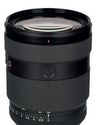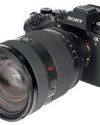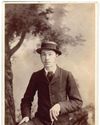
The defining characteristic of Olympus and Panasonic’s Micro Four Thirds system has always been low size and weight, thanks to the use of a sensor that’s slightly more than half the area of the APS-C format, and a quarter that of full-frame. But this brings drawbacks with respect to low-light shooting and achieving shallow depth of field. Olympus’s response has been to produce three f/1.2 primes in its top-end Pro range, whose ultra-large apertures should go some way to offsetting the smaller sensor size. Here we’re looking at the 25mm, which nestles between 17mm and 45mm optics in this trio.
Simple optical theory tells us that the Olympus 25mm f/1.2 should provide a similar pictorial effect, in terms of angle of view and degree of background blur, to a 33mm f/1.7 lens on APS-C or a 50mm f/2.4 on full frame. But while we fully expect to pay a premium for an f/1.2 optic, its current street price of £1,199 stands in contrast to the Canon EF-M 32mm f/1.4 STM for APS-C, or the full-frame Nikon Z 50mm f/1.8 S. Both of these promise greater background blur on paper, but cost a lot less at £499. Also lurking in the wings is Panasonic’s recently revamped Leica DG Summilux 25mm F1.4 II Asph, which offers a maximum aperture that’s just a one-third stop slower than the Olympus, for half the price. So is the Olympus 25mm f/1.2 the best that Micro Four Thirds users can buy, or an over-priced trinket?
Features
هذه القصة مأخوذة من طبعة November 16, 2019 من Amateur Photographer.
ابدأ النسخة التجريبية المجانية من Magzter GOLD لمدة 7 أيام للوصول إلى آلاف القصص المتميزة المنسقة وأكثر من 9,000 مجلة وصحيفة.
بالفعل مشترك ? تسجيل الدخول
هذه القصة مأخوذة من طبعة November 16, 2019 من Amateur Photographer.
ابدأ النسخة التجريبية المجانية من Magzter GOLD لمدة 7 أيام للوصول إلى آلاف القصص المتميزة المنسقة وأكثر من 9,000 مجلة وصحيفة.
بالفعل مشترك? تسجيل الدخول

Calling The Shots: A Queer History of Photography
Offering an unprecedented view of photographic history through a queer lens, this is a wonderful and powerful book, says

Large-aperture standard zoom, too
SONY has also revealed a new premium standard zoom, the FE 28-70mm F2 GM.

Super-fast, high-res Sony Alpha Ai II
SONY has announced its new professional full-frame flagship camera, the Alpha A1 II.

39 awesome accessories
Our round-up of the best accessories we've used and reviewed this year, along with some old favourites. There's something here for every budget, starting from just £7, including tripods, bags, filters and much more

Such a thing as society
This autumn sees the launch of a major new book and exhibition devoted to examining the multiplicities of photography during 1980s Britain. Peter Dench finds out more

Join Club
The sociable Canvey Island Photographic Club is keen to grow its in-person meet ups

Capturing flight
Winners and finalists of Bird Photographer of the Year share their tips for success with Hollie Latham Hucker

140 years of change
AP has become the world’s oldest surviving consumer photo magazine because we have moved with the times, says Nigel Atherton

Preserving history in platinum
A deep dive into the meticulous art of platinum printing, and the collaboration between the Royal Geographical Society and Salto Ulbeek. Mike Crawford explores how they brought historical photographs to life with enduring beauty and precision

Life in the past lane
What was life like for an amateur photographer in 1884? John Wade takes a trip back in time